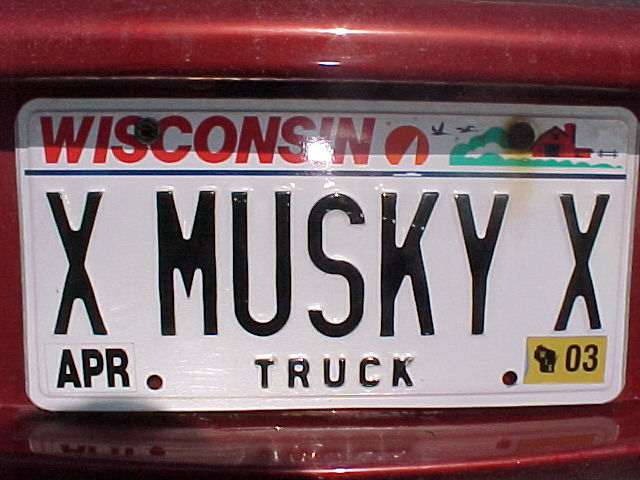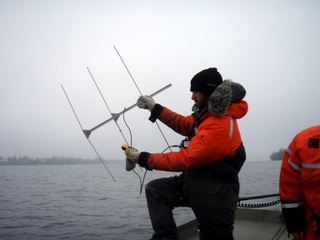|
|

Posts: 1245
Location: Madtown, WI | Got a go pro hero 2 about a month ago and have used it a ton grouse hunting etc.. very cool action shots in the woods. Plan on using it muskie fishing and saw they have a polarized lense for it. ANyone out there use this lens? any feedback? worth it? If it would help cut down on the clare to see follows I would be all for it. its only 10$ but want to know if its worth it or not.
Thanks!
Cory
|
|
| |
|

Posts: 32935
Location: Rhinelander, Wisconsin | It's worth it. |
|
| |
|
Posts: 1188
Location: Iowa | Well worth it! |
|
| |
|

Posts: 2024
| For $10 it's a no-brainer. I'm assuming you're looking at the Eye Of Mine/Polar Pro Filter. You need to be aware of how to install it properly (it's curved to accommodate the lens and housing) and make sure it's centered in the housing or you'll have noticeable vignetting. You will enjoy it. Colors pop more, light looks less harsh, and the obvious glare reduction. |
|
| |
|
Posts: 299
| Does this work for all GoPro's including 1st generation cameras? |
|
| |
|

Posts: 618
Location: Michigan | I bought one and didn't like it at all. I thought it was going to be a lens you could actually attach to the camera and it would be permanent, but it was basically a contact lens which could fall out when changing batteries. It took a little time to get it perfectly centered in the housing, but that was kind of washed away when changing batteries, moving video from camera to computer, or anything else which involved removing the camera from the case. Any time I removed the camera from the case, the lens would move a little bit and polarization would be off to the side or something. I also noticed that it seemed to clear up only a tiny bit of the screen which made the video a little weird to me. I definitely don't know as much about cameras as other guys on here, but I am just telling you what happened with me. |
|
| |
|

Posts: 2024
| GoPros have no threads on the rim of the lens, which is how polarizers and other filters are attached to DSLRs. Therefore, the only way to use any type of filter material is to drop it in between the lens glass and the plastic housing. Yes, you have to be careful when opening the housing and removing the camera, but this is easy if you keep the case pointed down. Getting it centered isn't too difficult. I keep the housing pointed down and use my finger to tap the case on the side I want the filter to move toward. JVK, the fact that only a small part of the frame was impacted is odd. It's possible you had a bad filter or the filter was moved off to the side a lot. I'd guess the latter as you would notice a distinct edge of polarization and non-polarization if it were moved off-center.
Detroit, yes this will work for GoPro Hero 960s, Hero HDs, and Hero HD2s. Not sure about the brand new Hero HD3, which is smaller overall. |
|
| |
|
Posts: 299
| thanks esox! I have the 1st generation Gopro HD 1080p |
|
| |
|

Posts: 5874
| Vignetting? What's this got to do with salad dressing? I like Raspberry please. |
|
| |
|

Posts: 2024
| Vignetting is a special type of vinaigrette, usually involves a blend of white wine and balsamic vinegar... I'm a moldy cheese fan myself. 
Darkening of the image at the edges relative to the central portion of the image. |
|
| |
|
Posts: 559
| My buddy and I have the Gen one cams and I got two polorized filters for them and found that it is better with out. check out the vids for (Tonts 23) in the vidieo section. The gen one cams do not seem to like low light and the filter made it worse. |
|
| |
|

Posts: 2024
| The filter may have "made it worse" under low light conditions because that is exactly what just about any filter will do. Anytime you put something dark in front of the lens it will slow the shutter speed down and you probably won't get the desired effect. In fact the polarizer marketed by GoPro and other third-party companies is FIRSTLY a neutral density filter which is intended to slow the shutter down, like getting propeller blades to look nice and blurred in video and stills (see GoPro site for that example). A secondary benefit is the polarization.
The filter material may not be strong enough to see an effect on a cloudy day. Here is an example of what it should look like on a (mostly) sunny day. Notice the light appears "warm" (except where I've clearly added some post-processing), the greens are well saturated and there's minimal glare. https://vimeo.com/46383062. That's the Hero HD being used (not sure if that's the "Gen One" you're referencing or if you're referring to the Hero 960). bobbie, do you have examples of video taken using the polarizer on a cloudless day with good light? Could very well be that the Hero 960 does not take a filter very well because of the sensor it uses, but it could be that the light was so poor during those two videos that you can't see the effect at all.
Another thing to be aware of is that polarization is strongest at a 90 degree angle to the sun. The closer to 0 and 180 the more light passes through the filter rendering a relatively unpolarized image. http://en.wikipedia.org/wiki/Polarizing_filter_(photography) |
|
| |
|

Posts: 32935
Location: Rhinelander, Wisconsin | Polarizing filters on hat cams are intended for bright (er) conditions and are especially handy when you can't choose to point the camera directly (180*) away from the sun or when the bounce is bad.
It would be nice to have a hat camera with manual white balance and auto exposure lock. |
|
| |
 Go Pro Hero2... Polarizer lens? any feedback
Go Pro Hero2... Polarizer lens? any feedback Go Pro Hero2... Polarizer lens? any feedback
Go Pro Hero2... Polarizer lens? any feedback